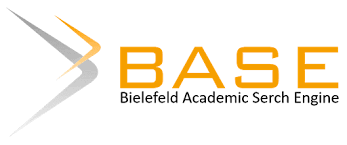PERSEPSI MAHASISWA BIMBINGAN KONSELING UNIVERSITAS MAHADEWA INDONESIA TERHADAP PERKULIAHAN DARING SEBAGAI SARANA PEMBELAJARAN SELAMA MASA PANDEMI COVID-19
Keywords:
Perception, Online lectures, Covid-19Abstract
Online lectures is one form of internet utilization that can enhance the role of students in the learning process. Descriptive analysis in this study examines students' perceptions of the Mahadewa University of Indonesia on online learning models related to the use of media, learning styles, and certain types of communication that are popular with students to help them get better output from online learning activities. The number of population in this study were 126 students guidance and counseling Mahadewa University who had been involved in online learning during the Covid-19 quarantine period. The results found that the most popular online learning media are WhatsApp and Google Classroom. As many as 63,49 % of Mahadewa University students are familiar with various online learning media before online lectures begin. In addition, the communication pattern that is most popular by students is the semi-two-way pattern. Further research is needed on online learning research with problem-based, collaborative, and other models.
Downloads
References
Davis, H., & Fill, K. (2007). Embedding blended learning in a university’s teaching culture: Experiences and reflections. British Journal of Educational Technology.
Eudoxie, G. D. (2011). Learning Styles among Students in an Advanced Soil Management Class : Impact on Students ’ Performance.
Fajrian, H. (2020, maret 15). https://katadata.co.id/. Retrieved April 8, 2020, from https://katadata.co.id/berita/2020/03/15/antisipasi-corona-nadiem-makarim dukung-kebijakan-meliburkan-sekolah.
Hameed, S., Badii, A., & Cullen, A. (2008). Effective E-Learning Integration with Traditional Learning in a Blended Learning Environment. European and Mediterranean Conference on Information Systems
Lashley, Y. G. (2014). Integrating computer technology in the teaching of Biology. International Journal Of Biology Education , 3(2).
Mustaji, Karwanto, Dewi, U., & Khotimah, N. (2014). Pemberdayaan Mahasiswa Untuk Berpikir Kritis, Kreatif, Dan Kolaboratif Melalui Pengembangan Perangkat Pembelajaran Kolaborasi. Fakultas Ilmu Pendidikan,Universitas Negeri Surabaya
Nugroho. (2012). Profesionalisme Guru SD Negeri Se-Kecamatan Warungasem KAbupaten Batang. Suatu tinjauan aspek persepsi guru tentang kepemimpinan kepala sekolah dan motivasi berprestasi guru. Varidika , 135-146.
Oh, E., & Park, S. (2009). How are universities involved in blended instruction? Educational Technology & Society , 12 (3).
Picciano, A. G. (2006). Blended Learning Implication for growth and access. Journal of asynchronous learning networks , 10 (3).
Psycharis, S., Botsari, E., & Chatzarakis, G. (2014). Examining the Effects of Learning Styles, Epistemic Beliefs and the Computational Experiment Methodology On Learners’ Performance Using the Easy Java. Journal Education Computer Res, vol 51, No 1, pp 91-118.
Rhouma, W. (2016). Perceptual Learning Styles Preferences and Academic. vol. 09, no. 02, pp.479–492.
Roblyer, A. H., & Doering. (2013). Integrating Educational Technology in Teaching. Boston: Pearson.
Rovai, A., & Jordan, H. (2004). Blended Learning and Sense of Community: A comparative analysis with traditional and fully online graduate courses. International Review of Research in Open and Distance Learning , 5(2).
S.Alam, & L.Jackson. (2013). A Case Study : Are Traditional Face-To-Face Lectures Still Relevant When Teaching Engineering Courses ? vol. 3, no. 4, pp. 9–16.
Saifuddin, M. F. (2016). E-Learning Dalam Persepsi Mahasiswa. Universitas Ahmad Dahlan , 102-110.
Simonson, M., Smaldino, S., Albright, M., & Zvacek, S. (2012). Teaching and Learning at a Distance. Foundation of Distance Education.
Singh, G., donoghue, J.O., & Worton, H. (2005). A Study Into The Effects Of eLearning On Higher Education. Journal of University Teaching & Learning Practice , 2(1).
Tayebinik, M., & Puteh, M. (2013). Blended Learning or E-learning? International Magazine on Advances in Computer Science and Telecommunications (IMACST) , 103-110.
Zimmerman, B. (2000). Attaining selfregulation: A social cognitive perspective. In M. Boekarts, P. R. Pintrich, & M. Zeidner (Eds.), Handbook of selfregulation (pp. 13- 39). San Diego, CA: Academic Press.
Zimmerman, B., & Martinez-Pons, M. (1988). Construct validation of a strategy model of student selfregulated learning. Journal of Educational Psychology, Vol. 80, 284-290.
Downloads
Published
How to Cite
Issue
Section
License
Copyright (c) 2020 LPPM Universitas Mahadewa Indonesia

This work is licensed under a Creative Commons Attribution-NonCommercial-ShareAlike 4.0 International License.
Hak cipta mencakup hak eksklusif untuk mereproduksi dan mengirimkan artikel ini dalam semua bentuk dan media, termasuk mencetak ulang, memotret, mikrofilm dan reproduksi serupa lainnya, serta terjemahannya. Reproduksi dari bagian manapun dari jurnal ini, penyimpanannya di database dan transmisinya dengan bentuk atau media apa pun, seperti salinan elektronik, elektrostatik dan mekanis, fotokopi, rekaman, media magnetik, dan lain-lain, akan diizinkan hanya dengan izin tertulis dari penerbit jurnal.






1_(1).jpg)











